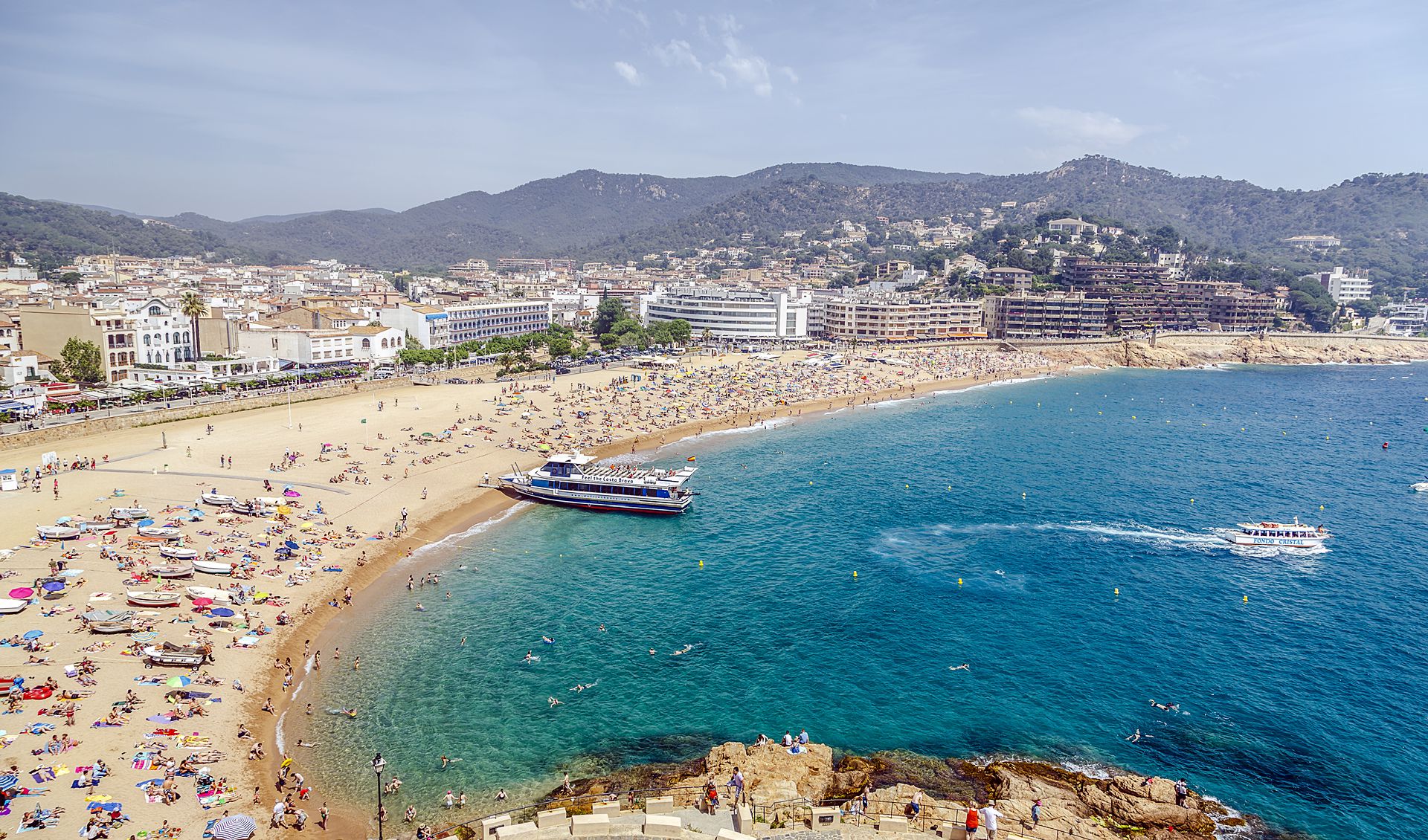Summer in Spain does not end when the calendar says it should: somewhere, it lasts almost all year round, and somewhere tries to stay until September-October. Let the summer months be left behind — the beginning of autumn can give you as many warm days as you need to swim in the sea and get an enviable tan. Read Kidpassage review of where to bask under the gentle sun and why many tourists go on excursions rather than to the sea in September.
Contents
- Holidays in Spain in September: pros and cons
- Weather
- Air and water temperature
- Can you swim in Spain in September?
- Beach holidays
- Costa Brava
- Costa Dorada
- Costa Blanca
- Costa del Sol
- Costa de Almeria
- Mallorca
- Tenerife - Tour holidays in September
- Family activities
- Holidays, events and festivals
- Cost of vacation
- Shopping
- Tips for parents

Holidays in Spain in September: pros and cons
If you read reviews about holidays in Spain in September, you may want to postpone the holiday to autumn. That is easy to explain:
- September is the ideal weather for a beach holiday — the heat goes down, and the sea remains very warm;
- the child quickly acclimatises, and not a single day of holiday will not be lost;
- Spain's beaches begin to empty in September, and now you don't have to go to tiny towns to find peace;
- as the flow of tourists decreases, airfares and hotel prices drop;
- moderate autumn warmth is favourable for excursions, whereas in the summer, because of the heat, you usually do not want to go anywhere.
September holidays have a few disadvantages, but they should be taken into account when planning your trip:
- the absolute calm in the resorts comes in the second half of September;
- in the Costa Brava resorts, it is comfortable to sunbathe only at the beginning of the month, and in the Costa del Sol, the sea gets colder;
- the number of flights to airports in the resort regions decreases towards the end of the month;
- Madrid and Barcelona are still very busy with tourists;
- most water parks close at the beginning of September (but amusement parks continue to operate).
So where to holiday in Spain in September? It's time to get specific.
The weather in Spain in September
September in Spain is the time of quince and persimmon picking. The colour of these fruit reflects the weather forecasts in Spanish resorts: each day is decorated with a warm golden circle.
Sunny, warm, dry — this is a brief characteristic of the weather in early September in all the country's resorts. Autumn has not yet had time to cool down the sea with its breath, and the beaches are becoming crowded only because people are finishing their holidays and it is time for schoolchildren to sit at their desks.
The weather in Spain at the end of September differs from one resort to another. In the south and on the islands, the bathing season is still in full swing, while in the east, it is time to dress warmer and move from the beaches to the museums.
The best weather in September and October is in Tenerife, where there is still high season.
To make it easier for you to pack luggage for a trip to Spain in September, we offer data on air and water temperatures in popular resorts.
Air and water temperature
Spain's Mediterranean climate makes for a beautiful start to autumn — sunbathing on the beach, swimming in the warm sea during the day, and sleeping without air conditioning at night.
See what a nice weather is promised in the cities of Spain:
| Destination | Daytime | Nightime | Water |
| Madrid | +28,7°С | +18,9°С | - |
| Barcelona | +25,8°С | +20,4°С | +24,4°С |
| Valencia | +28,5°С | +20,8°С | +25,5°С |
| Malaga | +29,2°С | +21,4°С | +22,4°С |
| Mallorca | +28,2°С | +21,4°С | +25,8°С |
| Tenerife | +28,6°С | +20,4°С | +24,0°С |
| Lloret de Mar | +25,7°С | +19,2°С | +23,7°С |
The temperature in Spain in September is just the right temperature for holidays with small children. Everywhere is warm but not hot, you can sunbathe on the beach and walk around the beautiful cities. However, by evening it gets noticeably colder. In the northeastern resort towns, the temperature drops to +16-20°C; in the south and islands it's a little warmer. The water temperature in Spain in September drops slightly, but swimming is still very comfortable.

Can you swim in Spain in September?
The beach season in Spain is hard to imagine without a warm sea. In most destinations, the average sea temperature in September is +24°C. Often the water is even warmer, around +25-26°C.
In some regions, the water cools down quickly. In Costa Brava, it's pleasant only in the first two weeks of autumn. In the Costa del Sol, the cold Atlantic currents cool the water even in summer.
Therefore, if you want to swim in Spain in September, choose resorts with the warm sea: Costa Dorada, Costa Blanca, Costa de Almeria, and Mallorca. The Atlantic Ocean, which washes the island of Tenerife, also becomes quite warm in autumn.
Beach holidays
Spain's beaches can be long or small, located in the centre of resorts or the countryside, beckoning with water activities or complete tranquillity. All of them are united by their impeccable coastal condition and free entrance.
Many of the country's beaches have the "Blue Flag" mark, which is awarded for meeting environmental standards — compliance with environmental standards, well-developed infrastructure, accessibility and safety of recreation.
To the international award, Spain adds its quality mark — Q, which guarantees impeccable service. Almost all resorts have comfortable beaches for holidays with children. The main convenience is a sandy shore, smooth entrance to the sea and clean, clear water. You can often count on playgrounds, inflatable water slides and even children's clubs (there are many of them in Costa Dorada).
Here are the best options to visit Spain in September: lie on the sand by sea and swim in warm water.
Costa Brava
The northernmost coast of Spain, washed by the Mediterranean Sea, closes the holiday season early. There is no intense heat in summer, and in early September, the temperature does not rise above +25°C. In the first decade of the month, the coast is still warm and comfortable, and the water in the sea has a temperature of +24-25°C. But by mid-September, the daytime temperature drops to +20°C, and the water cools down to +22°C.
Sometimes even the first week of autumn is marred by cold weather, but as a rule, cool days are still replaced by warmth. The rains usually start in the second half of September.
The Costa Brava has some rocky beaches with a sharp drop in the bottom, but in Lloret de Mar and Blanes, the coast is sandy, and the depth increases slowly.
The Costa Brava's two main advantages are its proximity to Barcelona and its certified family resorts. That means a beach holiday can be complemented by a trip to a bright, festive city, and the resort will have everything you need for a holiday with children.
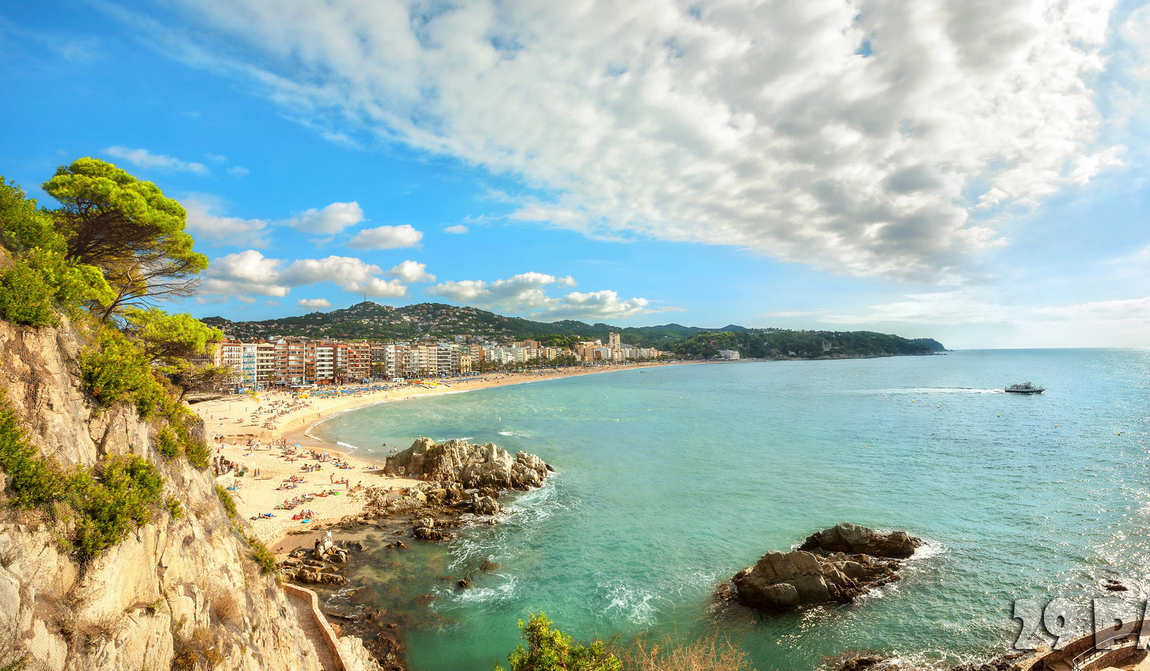
Costa Dorada
The "Gold Coast" is slightly further south than the Costa Brava, which immediately impacts the weather. The consistent warmth that sets in in June lasts until the end of September. So the first month of autumn will have air temperatures of +25-28°C and water temperatures of +24-26°C.
The thermometer can suddenly drop below +20 ° C in the middle of the month, but it happens infrequently. But the sea in the second half of September can cool down to +23°C. In the resorts of the Costa Daurada in September, a couple or three rains are possible, but the precipitation is too short-lived to remember them.
Almost any coastal resort is suitable for holidays with children. Long beaches, fine sand, gentle bottom, warm, clear water — children are ready to stay in the sea for hours.
The shallow sea off the coast of Salou and La Pineda serves as a natural frolicking pool for toddlers, while windsurfers appreciate the waves in Cambrils. But Costa Dorada is loved not only for the sea and beaches. Here is the best amusement park in Spain — "PortAventura", which includes a superb water park and theme park "Ferrari Land". The water park is only open until mid-September, but the rides are available until late autumn.
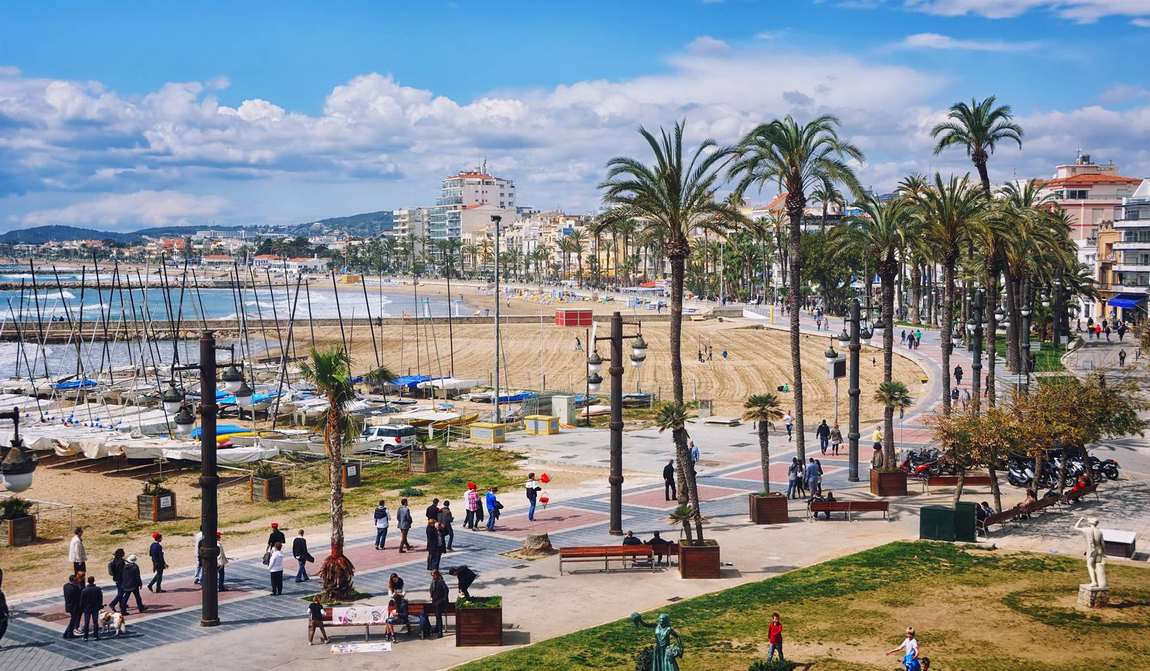
Costa Blanca
Autumn on the "White Coast" does not show its presence in any way. The temperature here reaches +25-28°C, and only by the end of September it drops to +23-25°C. And the sea in September is even warmer than in June — about +25-26°C.
The beginning of autumn in Costa Blanca is without rain; even clouds are rare. And if you look for a child-friendly destinations in Spain, Costa Blanca is the right choice. The local climate is good for kids' health, and the beaches are becoming more and more space daily. In the first week of September, peace is possible only in small resort towns; then, the silence prevails on the long sandy beaches of Alicante and Benidorm.
Quiet, however, does not mean boredom. Nowhere else are there as many animal parks and diverse museums as in Costa Blanca. Children will also enjoy the large amusement park Terra Mitica.
Unfortunately, most of the region's water parks do not operate in September.

Costa del Sol
It is believed that the best weather in the resorts of Spain in September is inherent in this hot region. But there is an important nuance to consider when choosing a resort. Indeed, early autumn on the country's southern shores is fabulous weather — the heat goes away, and thermometers finally show only +25-30°C.
But the sea temperature in Costa del Sol, alas, does not please: the Atlantic currents cool down the water to +20-21°C — you will not be able to swim with children. Once in a while, the sea at Sunny Beach keeps the temperature at about +23°C, which is perceived as a real gift. But beach holidays will undoubtedly be successful. Each resort has comfortable sandy beaches with a gentle entrance to the water, and there are children's and sports grounds in some places.
Parents with kids often choose Torremolinos and Benalmadena, where the shallowest sea, Fuengirola is known as a youth entertainment centre, and windsurfers appreciate the wind and waves in Marbella.
In addition, the Costa del Sol is appreciated for its abundance of luxurious hotels (it is one of the most expensive regions of Spain) and for its rich programme of family excursions and entertainment. We want to add that in September; the weather allows travelling to Seville or Granada — in summer, the scorching heat prevents travelling.
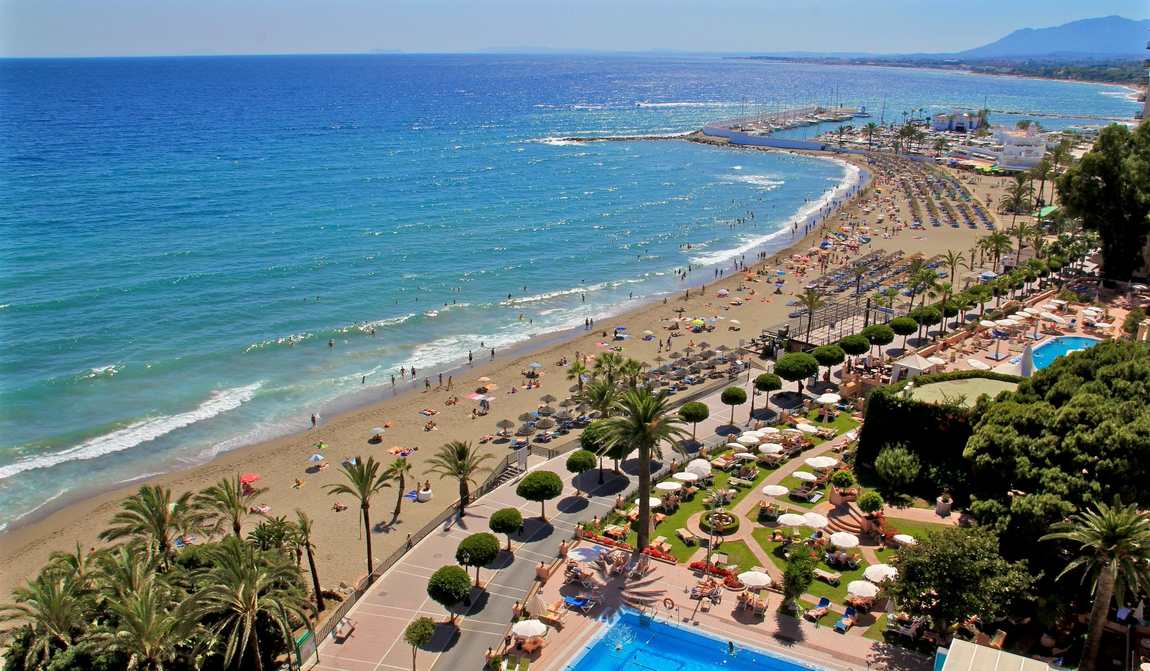
Costa de Almeria
This resort region is located east of the Costa del Sol, and Atlantic currents do not reach here. The water temperature here can reach +24-25°C, and only in mid-September does the sea cool down slightly.
The sunny and warm weather lasts for a very long time. All September thermometers show +25-28°C, the sky is always clear, and two short rains have little effect on travellers' plans.
Relatively strong winds characterise the Costa de Almeria. In September, its speed usually reaches 4.2 metres per second. The sandy beaches of Almeria are not overcrowded even in summer (the region is not the most popular), and in early autumn, it is pretty quiet. There are playgrounds and other entertainment for children on the coast.
Costa de Almeria is not yet among the popular holiday destinations, but there is a good tourist infrastructure. Local resorts have hotels with an extensive list of services for children and even the concept of "all-inclusive" — a rarity for Spain.

Mallorca
The Balearic Islands have no intention of saying goodbye to summer. During the day, thermometers often rise to +25-30°C, and the water in the sea is a delight: +26°C at the beginning of September and +24°C at the end. The weather in Mallorca occasionally frightens with rain, but the sky does not frown for long. The wind also does not interfere with the rest: its speed does not exceed 3 m/s.
Not all beaches of Majorca are convenient for a holiday with a child, but there are plenty of places with sandy shores and a gentle entrance to the water. Families with small children prefer the sandy beaches of Playa de Palma, Magaluf, Palma Nova, and Cala d'Or.
Majorca is Costa Blanca's main competitor in terms of family entertainment. The weather in September allows you to have fun in water parks, but you can just as quickly go on a trip in a submarine or descend into the Dragon's Cave.
Another advantage of the island is the variety of resort towns. Children rarely stay in the noisy capital or Magaluf, preferring the quiet Cala d'Or or Santa Ponsa. Many hotels of Mallorca have mini-clubs.
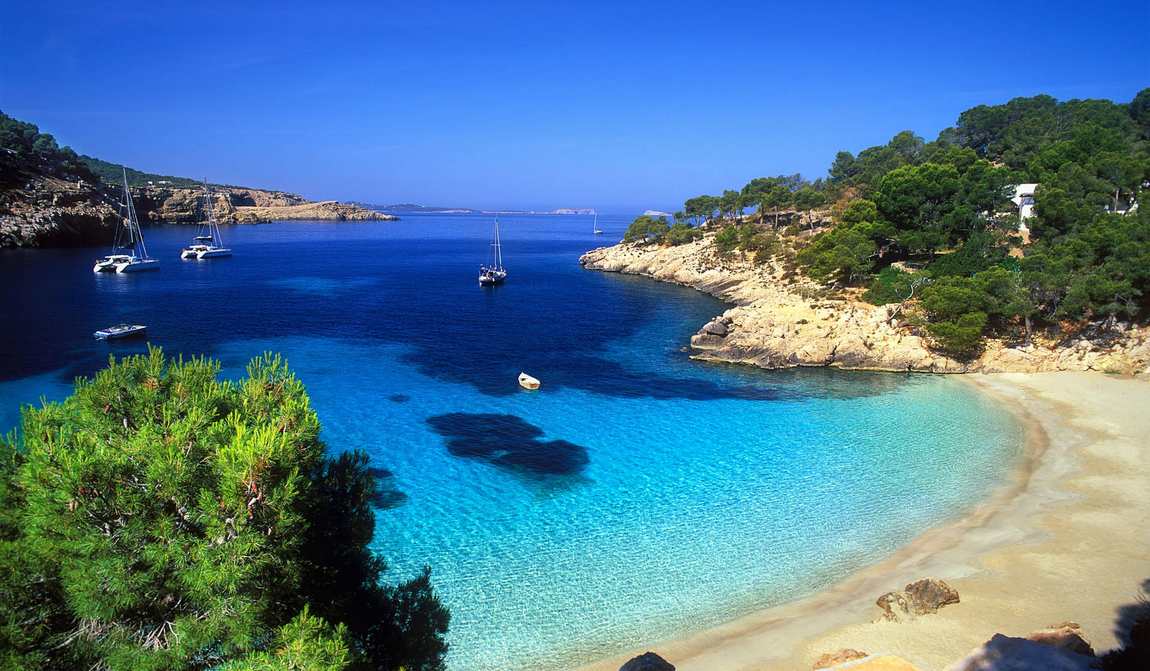
Tenerife
The weather in the Canaries, "the islands of eternal spring", is suddenly turning into summer. At the beginning and the end of September, thermometers show +25-28°C, and the Atlantic Ocean can warm up to +23-24°C — the water in Tenerife is so warm only in autumn. Neither rain nor clouds threaten holidaymakers, but the wind, whose speed reaches 3.7 m/s, is sometimes felt.
The best resorts on the island are located on the southern coast. The ocean is calm, it's a gently sloping sea floor near the beach, and the beach is covered with sand — sometimes volcanic black, sometimes light-coloured sand imported from Africa.
Playa la Pinta is the most child-friendly beach in Tenerife, with inflatable slides and other attractions for children. It should be added that the summer heat stays in the south and west of Tenerife. In the north, including Santa Cruz de Tenerife, the air temperature does not exceed +23-24°C, and there are almost as many cloudy days as clear ones. The tourist infrastructure on the island is impeccable. You can not leave the resort at all; at the same time, there will be shops, restaurants and entertainment at your side.
But Tenerife is also interesting for those who love travelling: sights are scattered all over the island. Public transport is a great help for travellers.
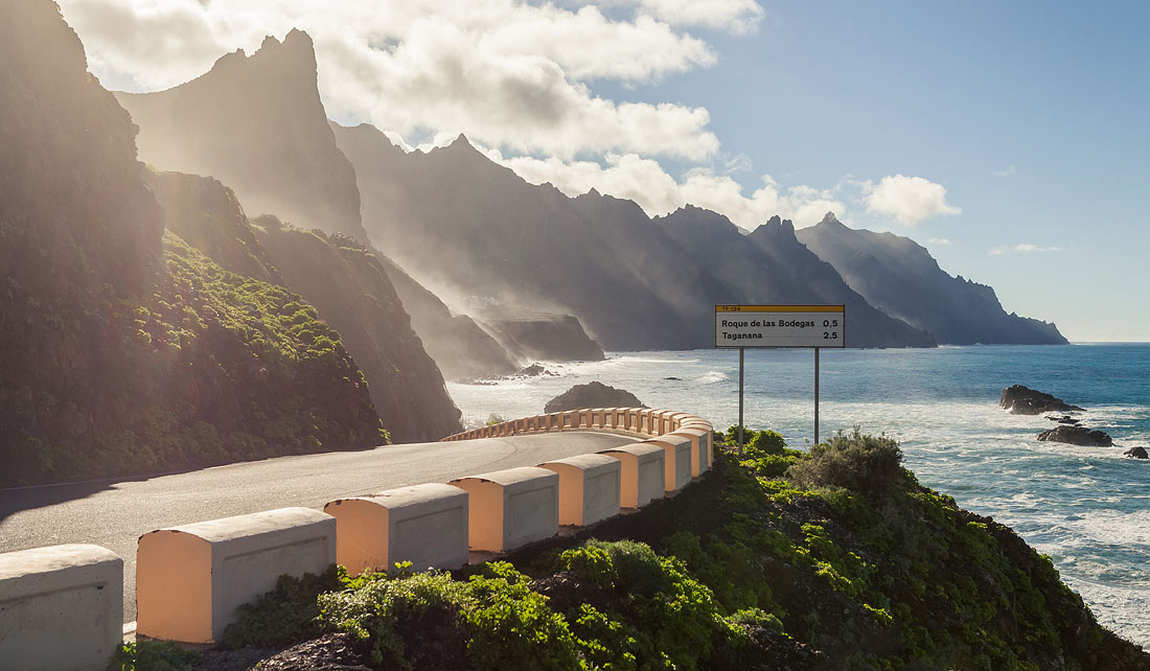
Tour Holidays
Some tourists are interested in something other than the beaches of Spain. They go to Madrid to visit the famous art museums, or Barcelona, lit up by Gaudi's imagination, or other Spanish cities. If you are ready to give up the sea for museums, September is the best time to go sightseeing.
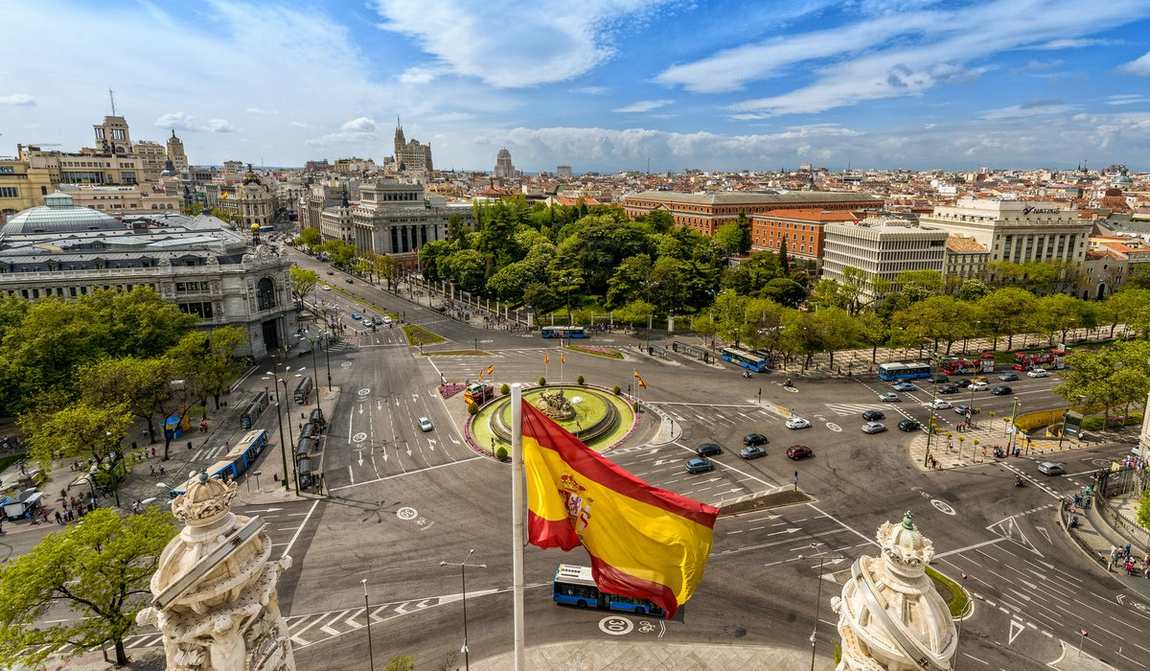
The Prado Museum, the Thyssen-Bornemisza Gallery and the Queen Sofia Art Centre are popular places to visit in Madrid. There are always plenty of visitors, but the Madrid Card serves as a way to bypass any queues.
For kids, suggest the Museum of the Americas (the Aztec books written in pictograms look a lot like comic books), the Wax Museum (selfies with a celebrity lookalike are a good idea for social networks) and the Real Madrid Football Club Museum (the history of the best club of the 20th century will interest not only fans).
The main sights of Barcelona are connected with the name of Antoni Gaudi. Guell Park is the most pleasant place to walk with children, decorated with mosaic sculptures, but you can also visit the Sagrada Familia Cathedral.
The capital of Catalonia is rich in museums that children would like to visit. These include the CosmoCaixa and Blau interactive museums, the Egyptian Museum with a reconstruction of a pharaoh's tomb, and the Maritime Museum, where you can play the role of a sailor on a medieval ship.
Football fans will undoubtedly want to visit the FC Barcelona museum and stadium. But the most interesting excursion programme awaits children in Valencia. Suppose your child misses a few days of school. In that case, they can substitute biology lessons with a visit to the Oceanographic Park, physics — to the Prince Philip Science Museum, astronomy — to the IMAX cinema and the Hemisfèric Planetarium. These and other facilities in the City of Arts and Sciences debunk a myth that learning is boring.
Resort towns have museums, too, albeit small ones. Sometimes hearing the name alone makes you want to take a tour. For example, what is demonstrated in the Microgiant Museum (Costa Blanca)?
As it turns out, a bullfighting arena that fits in the eye of a needle and other exhibits that can only be seen under high magnification.
You can visit the Maritime Museum and the Toy Museum in Costa Brava. In Costa Dorada, you can see the archaeological museum of Tarragona. In the Costa Blanca — the Turrón Museum and the Chocolate Museum. In the Costa del Sol — the museums of Málaga including one of Spain's two Picasso museums.
Tenerife's best museums are in the island's capital, away from the resorts. But you may be more attracted to the open-air attractions of Teide volcano, the lava Cave of the Wind, the eucalyptus and laurel heather forest, and the mysterious Guimar pyramids.
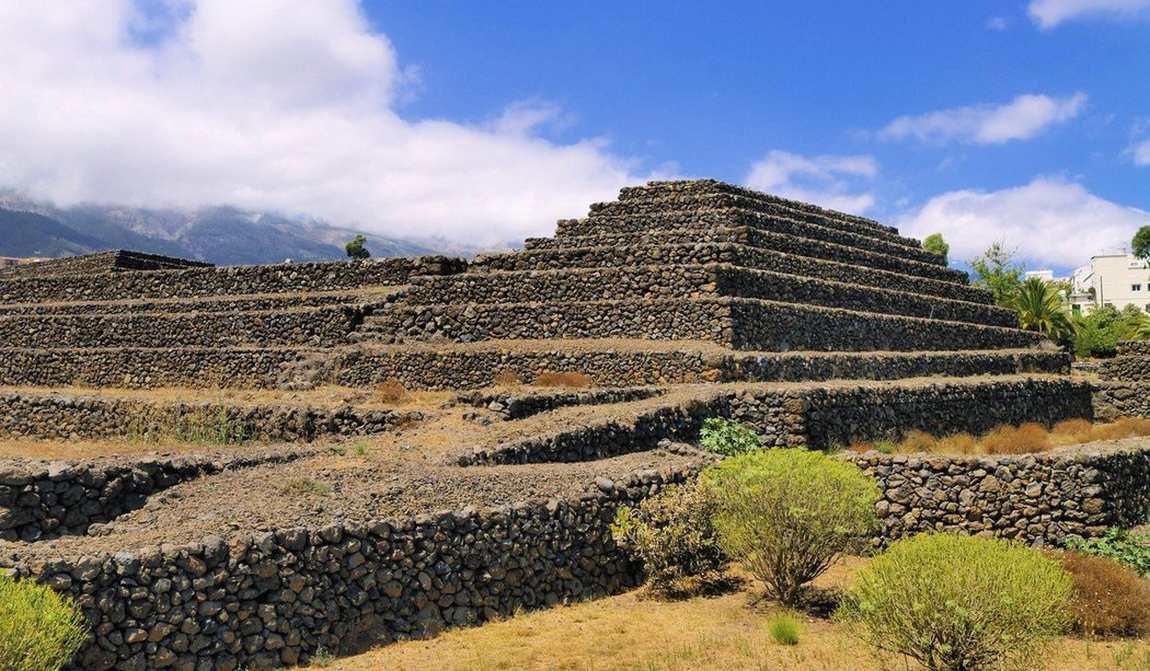
Mallorca also offers something unique — say, travelling from the capital to Soller on a vintage train or diving into the depths of the sea in a submarine.
Family activities
Spain is called one of the best countries for family holidays for a reason. Even though there is no animation in hotels here, as in Turkey, there is plenty of entertainment for children in every resort region. The first thing that comes to mind is amusement parks. The largest Spanish park, "PortAventura", is located near the sea, so visiting here will be a great supplement to a beach holiday.
Terra Mítica in Costa Blanca or Katmandu in Mallorca are smaller but no less attractive. The Costa Brava and Costa de Almeria have small amusement parks for pre-schoolers.
Major cities have their family recreation centres. In Madrid, it is the Casa de Campo park; in Barcelona, it is the park on the Tibidabo hill, and from the Costa del Sol resorts, it is easy to get to Seville, where there is a nice amusement park "Isla Magica" (however, it is open daily only in the first week of September, and then at the weekends).
A visit to the animal parks in Spain, where animals and birds are made to feel at home, will leave you with fond memories. We suggest visiting the Biopark of Valencia, Terra Natura Park and Aitana Safari Park (Costa Blanca), Selvo Marina Dolphinarium and Selwo Aventura Zoo (Costa del Sol), Loro Park and Jungle Park (Tenerife), Mallorca Safari Park and Dolphinarium.
But water parks are gradually closing down. Most are open only in the first days of September; PortAventura is available until mid-month. At the same time, Siam Park in Tenerife, one of Spain's best water parks, will not close. Aqualand water amusement parks in Mallorca, Torremolinos (Costa del Sol), and Aquopolis in Torrevieja are open throughout September.
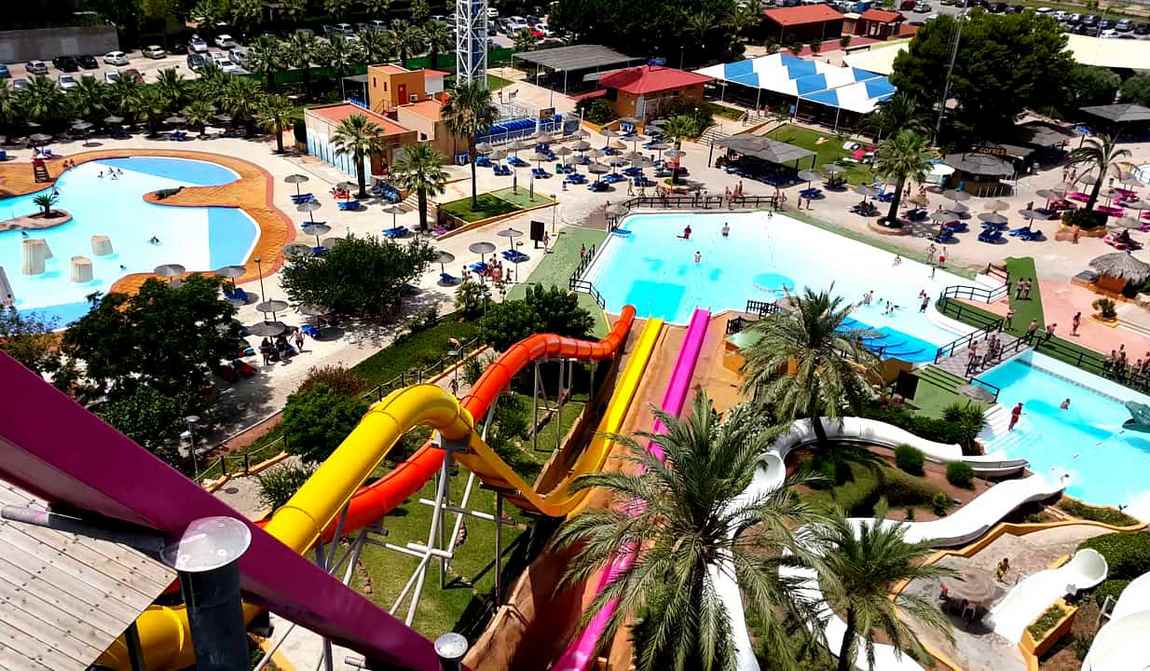
The Costa Brava is the only one that doesn't boast grandiose entertainment. But there are plenty of luxurious gardens like nowhere else. The Marimurtra and Piña de Rosa botanical gardens contain plants from all continents, while the St Clotilde Gardens are lined with marble statues.
Holidays, events and festivals
In September, several autonomous communities of Spain celebrate their holidays. And if travellers travel relatively rarely to Asturias, Cantabria or Extremadura, many tourists come on the day of Catalonia, September 11.
The towns organise free entertainment, Sardana dancing in the streets and Castellers — builders of "living towers" — performing in the squares.
Something similar happens on Mallorca Day, 12 September. To the delight of the tourists, the entertainment on the island lasts for a whole week.
La Mercè Festival, one of Spain's most notable festivals in September, also occurs in Catalonia. In honour of Our Lady of Mercy, considered the patron saint of Barcelona, the city organises a parade of giant figures, a correfoc fire show, concerts and folk festivities.
There will be Sardana, castellas and traditional treats too. The festival usually lasts a few days, from 20 to 24 September.
And in the cities of Costa Blanca, you can catch an unusual action: people in medieval costumes parade through the streets. That is how one of the stages of the "Moors and Christians" festival, which is held in honour of the end of the Reconquista and the establishment of Spanish rule in the Pyrenees, looks like.
Cost of vacation
The closer to the end of the holiday season, the lower the prices in Spain: in September you can holiday here much cheaper than in summer. The hotel rates drop, which is a significant part of the travel budget.
Airfares
With the arrival of September, flights to Spain become cheaper by 5-8% compared to August. In October, the cost will decrease further, with a price drop of between 5% and 20%. Tickets to Madrid are the most expensive — their price in September is 30% higher than the price of tickets to sea resorts.
Accommodations
The price of housing in Spain changes unevenly. In Costa Brava, where the season is already ending, hotels lower their costs by almost half. In cities where the beach season lasts the whole of September, the price remains unchanged or slightly increases. And in Madrid, where you can finally breathe freely after the summer heat, the cost of housing soars by 50-60%. Since October, housing in seaside resorts will fall in price by 15-25%, in major cities — by 10-30%. And only in Tenerife, where the season is in full swing, the price will increase by 5-10%.
Package Tours
Ready-made tours to Spain become significantly cheaper with the arrival of autumn. Compared to August, the price of a three-day holiday decreases by 8%; a tour package for 7-11 nights is cheaper by 15-20% and 14 nights — 25%. In October, the cost will decrease by another 15-20%.
Food
Spain continues to receive tourists in September, so you should expect restaurant prices to stay the same. However, there is a way to save money — you should prefer places where Spaniards usually have lunch and dinner. In such places, you can enjoy an authentic paella or original gazpacho for 5-10 euros, while in restaurants in the resort area, these dishes cost twice as much.
Here are a few more ways to cut food costs without compromising on quality:
- Eat in tapas bars. Contrary to stereotypes, they serve more than just alcoholic snacks.
- Snack in charcuterie. Stalls selling jamon, cheeses and sausages make sandwiches with Spanish specialities.
- Cook in an apartment. Many tourists in reviews about holidays in Spain in September write about affordable prices in supermarkets and markets. We recommend adopting some local recipes: 100 g of jamon, fragrant melon slices — and a dish of Spanish cuisine is ready.
Shopping
Sales in September are rare, yet tourists do not come from Spain without purchases. They buy not only souvenirs and delicious things. Firstly, in the outlet shops of Barcelona and Valencia prices are moderate even without discounts. Secondly, famous and unknown Spanish brands offer original and high-quality things. Teenagers and young people will appreciate bright Desigual clothes, and universal Munich trainers will suit people of any age.

Tips for parents
Holidays in Spain in September with children are always a sea of fun. To prevent minor troubles from interfering with your plans, stick to a few simple rules:
- On the beach and on walks, use sunscreen. Choose a product with SPF 20-30, depending on your skin type.
- Don't forget to bring your hats.
- During midday hours, wear light, light-coloured clothing that covers the body.
- Bring light jackets, sweatshirts or cardigans for evening walks.
The only topic we haven't touched on is family-friendly hotels in Spain. Kidpassage's website has an impressive collection of hotels caring for little travellers. Find a comfortable hotel and enjoy a warm and sunny autumn getaway on the Mediterranean Sea.



